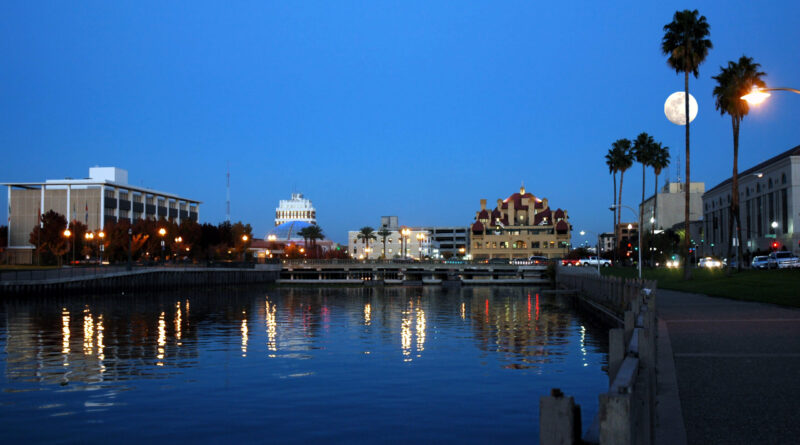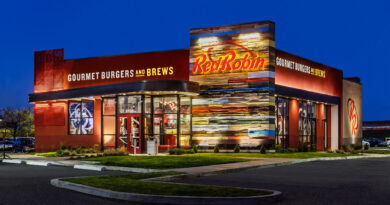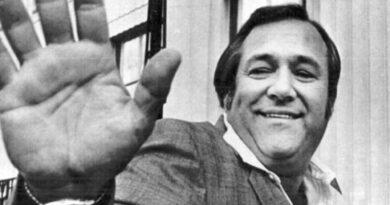History of Stockton California
Stockton, California, is a city with a rich and complex history that dates back to the early 19th century. Situated in the heart of the San Joaquin Valley, Stockton has played a significant role in the development of California and the broader American West. From its beginnings as a bustling Gold Rush supply hub to its emergence as a modern urban center, Stockton’s history is marked by periods of prosperity, struggle, and transformation.
In this article, we’ll explore the fascinating history of Stockton, delving into its origins, key historical events, and the factors that have shaped the city into what it is today.
The Early Days: Native American Inhabitants
Long before European settlers arrived in California, the area now known as Stockton was inhabited by Native American tribes, particularly the Northern Valley Yokuts. These indigenous people lived in small villages along the waterways of the San Joaquin Valley, relying on fishing, hunting, and gathering for sustenance. The fertile land and abundant resources of the region supported a thriving community for thousands of years.
The arrival of Spanish explorers in the late 18th century marked the beginning of significant changes for the indigenous population. Spanish missions and settlements were established throughout California, leading to the displacement of Native American communities and the introduction of European diseases, which had devastating effects on the native population.
The Founding of Stockton
Stockton was officially founded in 1849 by Captain Charles Maria Weber, a German immigrant who had come to California during the Mexican era. Weber, who had acquired the land through a Mexican land grant, recognized the strategic importance of the area as a transportation and supply center for miners heading to the Sierra Nevada during the California Gold Rush.
Weber named the settlement “Stockton” after Commodore Robert F. Stockton, a naval officer who played a key role in the American conquest of California during the Mexican-American War. Stockton became the first community in California to have a name that was neither Spanish nor Native American in origin, reflecting its founder’s desire to establish a distinctly American town.
Stockton During the California Gold Rush
The discovery of gold in California in 1848 triggered a massive influx of settlers and fortune-seekers to the region, and Stockton quickly became a key supply hub for those traveling to the goldfields. The city’s location on the San Joaquin River made it an ideal point for receiving goods and transporting them to the interior of the state.
Stockton’s population and economy boomed during the Gold Rush, with new businesses, saloons, hotels, and warehouses springing up to meet the demands of miners and settlers. The city also became a center for agriculture, as farmers took advantage of the fertile soil and mild climate to grow crops that could be sold to the growing population.
By the early 1850s, Stockton had become one of the largest and most prosperous cities in California. The city’s growth during this period laid the foundation for its future development as an agricultural and industrial center.
The Growth of Agriculture and Industry
Following the Gold Rush, Stockton continued to grow as an agricultural hub, with farmers in the surrounding San Joaquin Valley producing a wide range of crops, including wheat, barley, and fruits. The city’s location on the river made it an important transportation hub, with goods being shipped by steamboat to San Francisco and other markets.
In addition to agriculture, Stockton developed a strong industrial base in the late 19th and early 20th centuries. The city became a center for manufacturing, particularly in the production of farm equipment and machinery. Companies like Holt Manufacturing Company, which later became Caterpillar Inc., were founded in Stockton and contributed to the city’s reputation as an industrial powerhouse.
Stockton’s Role in the Civil War
During the Civil War, Stockton, like much of California, was a Union stronghold. Although the state was far removed from the battlefields of the East, it played a crucial role in supporting the Union war effort by providing gold, supplies, and soldiers. Stockton’s agricultural and industrial resources were essential in sustaining the Union cause.
The city also became a refuge for Southern sympathizers who had relocated to California, leading to some tension and political divisions within the community. However, Stockton remained firmly aligned with the Union throughout the conflict.
The Arrival of the Railroads
The arrival of the railroads in the 1860s and 1870s marked a new era of growth and prosperity for Stockton. The Central Pacific Railroad, which later became part of the transcontinental railroad, connected Stockton to the rest of the country, facilitating the movement of goods and people.
The railroad boom led to the development of new neighborhoods, businesses, and infrastructure in Stockton. The city’s economy diversified, with new industries emerging alongside agriculture, including lumber, shipping, and manufacturing. Stockton’s strategic location as a transportation hub made it a vital link in California’s economic network.
Stockton in the 20th Century
The early 20th century was a period of continued growth and modernization for Stockton. The city’s population expanded rapidly, fueled by immigration and the migration of workers to the region’s farms and factories. Stockton’s downtown area became a bustling commercial center, with new buildings, theaters, and hotels reflecting the city’s prosperity.
The Great Depression of the 1930s brought economic hardship to Stockton, as it did to much of the country. However, the city’s agricultural base helped sustain it during this difficult period, and Stockton continued to grow, albeit more slowly.
The Great Depression and World War II
Like many American cities, Stockton was deeply affected by the Great Depression. The economic downturn led to widespread unemployment, poverty, and social unrest. The city’s agricultural workers, many of whom were migrant laborers, were particularly hard hit by the economic crisis.
The onset of World War II brought new opportunities for Stockton, as the city’s industrial base was mobilized to support the war effort. Stockton became a center for shipbuilding, manufacturing, and military training, contributing to the Allied victory. The war also brought significant demographic changes to the city, as thousands of workers and their families moved to Stockton to take advantage of the new jobs.
Post-War Boom and Urban Development
The post-war period saw a boom in Stockton’s population and economic development. The city expanded rapidly, with new suburbs, shopping centers, and infrastructure projects transforming the landscape. The construction of Interstate 5 and State Route 99 connected Stockton to other parts of California, facilitating trade and travel.
During this period, Stockton also experienced significant social changes, including the growth of its African American, Latino, and Asian communities. The city’s cultural diversity became one of its defining characteristics, contributing to a rich and vibrant community life.
The Civil Rights Movement and Social Change
The Civil Rights Movement of the 1950s and 1960s had a profound impact on Stockton, as it did on much of the United States. The city’s African American and Latino communities played a key role in the struggle for civil rights, challenging segregation and discrimination in housing, education, and employment.
Stockton’s churches, community organizations, and student groups were active in the movement, organizing protests, voter registration drives, and advocacy campaigns. The city’s Civil Rights Movement led to significant social and political changes, including the election of Stockton’s first African American and Latino city council members.
Economic Challenges and Revitalization Efforts
The late 20th century brought economic challenges to Stockton, as the city’s industrial base declined and agricultural jobs became increasingly mechanized. The city faced high levels of unemployment, poverty, and crime, leading to a period of economic stagnation and urban decay.
In response, Stockton embarked on a series of revitalization efforts aimed at revitalizing the downtown area, attracting new businesses, and improving the quality of life for residents. These efforts included the development of new cultural and recreational amenities, such as the Stockton Arena, the Bob Hope Theatre, and the revitalization of the waterfront area.
Stockton’s Bankruptcy and Recovery
In 2012, Stockton became the largest city in the United States to file for bankruptcy, a result of years of financial mismanagement, declining tax revenues, and rising pension costs. The bankruptcy was a major blow to the city’s reputation and led to significant cuts in public services.
However, Stockton’s bankruptcy also served as a wake-up call, prompting city leaders to implement new financial management practices and strategies for economic recovery. Since emerging from bankruptcy in 2015, Stockton has made significant progress in stabilizing its finances, attracting new businesses, and addressing long-standing social and economic challenges.
Modern Stockton: A City of Diversity and Resilience
Today, Stockton is a diverse and resilient city that has overcome significant challenges to emerge as a vibrant and dynamic community. The city’s population reflects a rich tapestry of cultures, with large Hispanic, Asian, African American, and white communities contributing to Stockton’s cultural richness.
Stockton’s economy is also diversifying, with new industries such as healthcare, education, logistics, and technology playing a growing role in the city’s economic landscape. The city is home to several institutions of higher learning, including the University of the Pacific, which contributes to Stockton’s intellectual and cultural life.
Cultural Landmarks and Historic Sites
Stockton is home to a wealth of cultural landmarks and historic sites that reflect its rich history. Some of the most notable include:
- The Haggin Museum: Located in Victory Park, the Haggin Museum houses a collection of fine art, historical artifacts, and exhibits on the history of Stockton and the San Joaquin Valley.
- The Bob Hope Theatre: A beautifully restored 1930s movie palace, the Bob Hope Theatre is a cultural hub that hosts concerts, theater productions, and film screenings.
- The Stockton Waterfront: The revitalized waterfront area features the Stockton Arena, Banner Island Ballpark, and a variety of restaurants and entertainment venues, making it a popular destination for residents and visitors alike.
- The University of the Pacific: Founded in 1851, the University of the Pacific is the oldest chartered university in California and is known for its beautiful campus and strong academic programs.
The Future of Stockton
As Stockton looks to the future, the city faces both challenges and opportunities. Continued efforts to revitalize the downtown area, attract new businesses, and address social and economic disparities will be key to the city’s long-term success. Stockton’s diverse population, rich history, and strategic location in the heart of California’s Central Valley position it well for future growth and development.
The city’s leadership is focused on building a sustainable, inclusive, and resilient community that honors its past while embracing innovation and change. With a strong sense of community and a commitment to progress, Stockton is poised to continue its transformation into a thriving modern metropolis.
Discover more from City Towner
Subscribe to get the latest posts sent to your email.




